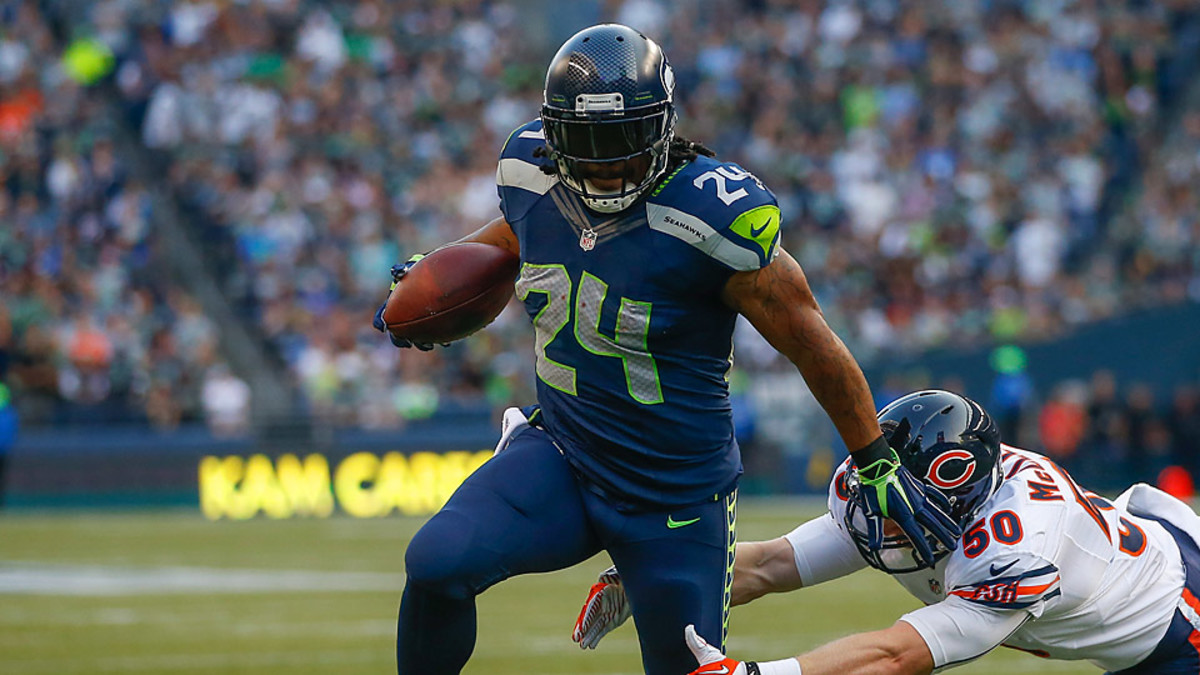Calculated risk: Is drafting a RB riskier than drafting a WR early in drafts?
In our running backs primer article, David Gonos mentioned how risky running backs are these days. Indeed, if you drafted Doug Martin, Arian Foster, C.J. Spiller, Trent Richardson or Ray Rice in the first round last year, you might be tempted to avoid running backs early in favor of elite wide receivers (or one particular tight end). Those top receivers are safer picks right? Not so fast. Does this line of thinking have any statistical merit? The answer is yes and no.
SI's 2014 fantasy football draft preview: Rankings, projections and more
Last season, just four of the ten highest-drafted running backs (per data from FantasyFootballCalculator.com) finished among the top ten backs at the end of the season. Adrian Peterson, Jamaal Charles, Marshawn Lynch and LeSean McCoy were the only backs who were both drafted as and performed like top-10 players at the position. That seems like a pretty low success rate, especially for such high picks, but wide receivers were not much better. Last year gave us Julio Jones, Larry Fitzgerald, Andre Johnson, Randall Cobb and Roddy White, all preseason top-10 receivers who finished outside the top 10 in scoring.
This trend holds true for the past five years. Over that time frame, 48 percent of the top 10 running backs drafted actually finished the season in the top 10. The number is 52 percent for wide receivers. That’s a negligible difference (two players over five seasons), and not really enough to say that running backs more consistently “bust” or drop out of the top 10 at their position.
BELLER: Will Jordy Nelson be top fantasy receiver in 2014?
Maybe there is this perception that running backs are riskier because when they bust, they really go down in flames. We all watched Trent Richardson, average draft position of 7.7 overall, play last season. The thought process may be that wide receivers who fall out of the top 10 put up solid-but-not-elite seasons, while running backs who drop are completely useless.
But this just isn’t true either. In fact, running backs who drop out of the top 10 perform better than their wide receiver counterparts who do the same, though it is close. Over the last five years, running backs who were drafted in the top 10 but didn’t finish the season that way produced, on average, 129.5 points. Wide receivers who fit that same description: 125.5 points. Basically, top 10 wide receivers were just as likely to completely bomb as top 10 backs.
That data indicates that top running backs carry roughly the same risk as top wide receivers. They “hit” at nearly the same rate, and when they miss, they don’t fall quite as far as wide receivers do. (Yes, the top 10 backs are drafted higher on average than the top 10 receivers, but this comparison is about risk relative to position.) However, there is some data to support taking receivers over backs early in drafts.
Fantasy football debate: Should owners target Megatron or Lacy?
A top-five wide receiver is the safest non-quarterback investment you can make. (And there are so many good quarterbacks that while they are safe, they are not especially valuable investments early in a draft.) Over the last five years, the first five wide receivers picked have finished in the top 10 at the position 76% of the time. Compare that to the other players you could draft. Top five receivers are going off the board from the end of the first round to the beginning of the second. Running backs 6-10 are getting drafted in roughly the same range. Their hit rate? 44%. Top-flight wide receivers have been significantly more reliable than late first-round running backs.
The flip side is that wide receivers 6-10 have been the riskiest group by far. They finish in the top 10 just 28% of the time. So beware Julio Jones, Jordy Nelson, Antonio Brown, Alshon Jeffery and Randall Cobb, this year’s sixth-through-tenth highest-drafted receivers. Know that drafting one of them before you’ve taken a running back is a risky proposition.
Overall, top-10 running backs and wide receivers carry about the same amount of risk, which is something to consider before you go with a no running backs early approach. But if you’re drafting at the end of the first round, elite wide receivers bring a little more reliability than the available running backs.





































